It’s rather exciting to be able to write an article entitled Trends in Holistic Health. Maybe it’s just me because I work in the industry. But I hope that you’re excited about it too. Not that long ago, holistic healing practices and holistic health were still being pushed aside by traditional, Western medicine. Although practiced for thousands of years, holistic health modalities have primarily only been for the hardcore alternative health-conscious followers. The current trends in holistic health now show otherwise.
Today, more and more patients are turning to holistic medicine as they’re faced with limiting, traditional solutions to their health problems. Traditional Western medicine is no longer as “enough” when it comes to healing. Exciting new trends in holistic health have emerged as patients dig deeper to find solutions to health issues.
Traditional Health Care vs. Holistic Health Care
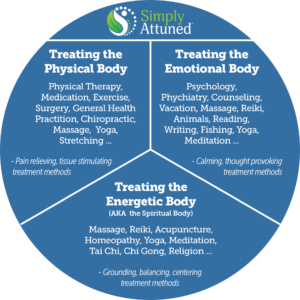
While traditional health care focuses on the symptoms of a disease or illness, holistic health care or alternative healing methods aim at finding the root cause of the symptoms. Also, where traditional medicine may look to medication or surgery as a solution, holistic healing modalities will always look for a solution that stimulates the body to heal naturally.
Alternative or holistic health looks at all levels of the body (emotional body, physical body, mental body, and spiritual body) to find the answers. So why, if we know holistic medicine works, doesn’t traditional Western medicine practice this? Frankly, I think they would if they had the time. Typically in our culture “time is of the essence.” Nurses and Doctors are given 15 to 20 minutes per patient. It’s difficult to get to the bottom of something in that amount of time, so they do what they can to make the patient feel better. It’s not because they don’t care to find a better, long-term solution.
How Is Mainstream Medicine Affected by New Trends in Holistic Health?
More and more nursing students and doctors are embracing the idea of comprehensive care. Alternative medicine options are becoming part of the mainstream view of health care. It’s no longer uncommon for a patient to be sent to another location in the office or elsewhere in town for a complimentary form of treatment. The goal is to provide comprehensive care for all patients.
Due to the resurgence of holistic health medicine, nursing schools such as Ameritech College and the University of Tennessee are now offering holistic programs. This is a huge step toward a more comprehensive and holistic approach to patient care.
Holistic and Alternative Practices Now Trending
There is, without a doubt, an important role for traditional Western medicine in our society. There are times when it is the best solution available, and a patient’s life may depend on it. However, holistic health modalities assist traditional methods by making the body more receptive to treatments and healing. A combined approach is now proving to be the best approach to health and healing.
1 – Balneotherapy
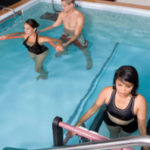 Balneotherapy, while similar to hydrotherapy, is the practice of using natural springs and mineral springs as a therapeutic modality. This practice dates back to 1700 B.C.E. Spas often try to recreate natural mineral baths by adding minerals to the water. Modern applications of balneotherapy are used to control pain, swelling, anxiety, muscle loss, bone density issues, and more. Licensed Massage Therapists are often trained in hydrotherapy treatments which have similar benefits.
Balneotherapy, while similar to hydrotherapy, is the practice of using natural springs and mineral springs as a therapeutic modality. This practice dates back to 1700 B.C.E. Spas often try to recreate natural mineral baths by adding minerals to the water. Modern applications of balneotherapy are used to control pain, swelling, anxiety, muscle loss, bone density issues, and more. Licensed Massage Therapists are often trained in hydrotherapy treatments which have similar benefits.
2 – Massage
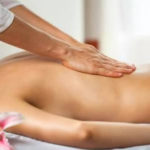 Practitioners of traditional medicine are referring more and more patients to a Licensed Massage Therapist to compliment or enhance the healing process. Massage therapy is used to manage pain, stress, mobility issues, and more. It is also used to increase circulation and to aid the body in the natural healing process.
Practitioners of traditional medicine are referring more and more patients to a Licensed Massage Therapist to compliment or enhance the healing process. Massage therapy is used to manage pain, stress, mobility issues, and more. It is also used to increase circulation and to aid the body in the natural healing process.
3 – Acupressure
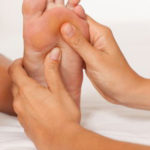 Acupressure uses both fingers and hands to stimulate and maintain the balance of energy within our body. It differs from massage in that acupressure focuses on acupressure points. This is not the same as the trigger points or tender points that may be a focus during a massage. Research shows that acupressure is helpful in reducing anxiety, pain, and nausea, among other things.
Acupressure uses both fingers and hands to stimulate and maintain the balance of energy within our body. It differs from massage in that acupressure focuses on acupressure points. This is not the same as the trigger points or tender points that may be a focus during a massage. Research shows that acupressure is helpful in reducing anxiety, pain, and nausea, among other things.
4 – Homeopathy
 Homeopathy has been in practice since the late 1700s. It is based on two principles. 1) Like cures like. Trace substances that cause the same reaction as the symptoms can be used to treat it. 2) Only the minimum dose is necessary to stimulate the body to heal. As an example, trace amounts of onion are used as a homeopathic remedy to treat symptoms of watering, itching, or burning eyes. You can see these principles at work in everyday life. Too much sleep can make you tired, but just the right amount will leave you feeling well rested. Exercising can give you more energy. Too much exercise can wear you out. You see, [a little bit of] like cures like.
Homeopathy has been in practice since the late 1700s. It is based on two principles. 1) Like cures like. Trace substances that cause the same reaction as the symptoms can be used to treat it. 2) Only the minimum dose is necessary to stimulate the body to heal. As an example, trace amounts of onion are used as a homeopathic remedy to treat symptoms of watering, itching, or burning eyes. You can see these principles at work in everyday life. Too much sleep can make you tired, but just the right amount will leave you feeling well rested. Exercising can give you more energy. Too much exercise can wear you out. You see, [a little bit of] like cures like.
5 – Yoga and Meditation
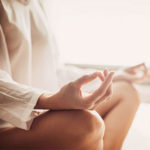 There are many forms of yoga, but the systems that focus on the breath and mindfulness are best at reducing stress and anxiety. These forms of yoga, in turn, can also be helpful in stimulating our immune system. When our body is relaxed, it is naturally capable of healing itself. It’s continuously working toward a healthy level of homeostasis. This is to say that internally, our body maintains a relatively stable environment, even when the external environment is continuously changing. It’s actually quite a miraculous feat. When stress enters our body (which in today’s world is nearly constant), the homeostatic balance is thwarted, and our internal systems must work harder to maintain a balance. Healing and warding off disease and illness becomes secondary. Stress directly affects the ability for our immune systems to function.
There are many forms of yoga, but the systems that focus on the breath and mindfulness are best at reducing stress and anxiety. These forms of yoga, in turn, can also be helpful in stimulating our immune system. When our body is relaxed, it is naturally capable of healing itself. It’s continuously working toward a healthy level of homeostasis. This is to say that internally, our body maintains a relatively stable environment, even when the external environment is continuously changing. It’s actually quite a miraculous feat. When stress enters our body (which in today’s world is nearly constant), the homeostatic balance is thwarted, and our internal systems must work harder to maintain a balance. Healing and warding off disease and illness becomes secondary. Stress directly affects the ability for our immune systems to function.
When Should You Seek Holistic Alternatives?
Anytime you’re recovering from chronic issues, a recent accident, or surgery (even if that surgery was several years prior), or if you’re preparing for surgery, holistic health methods are hugely beneficial. If you were just in an accident and discharged after 5 hours in the ER, that is not the proper time to seek an alternative approach. Holistic health care should never be used to replace the advice or guidance of a physician. Acute injuries and emergency situations are still best treated by traditional Western medicine first. Then after your symptoms have stabilized (generally after 72 hours) and with the approval of your physician, it’s a perfect time to seek alternative options to complement and enhance your body’s ability to heal.
Together, traditional Western medicine and holistic health provide the body with the best environment for healing – physically, mentally, emotionally, and spiritually.
What do you think about the top trends in holistic health?
Have you seen these things offered in a standard medical facility yet?
Has your physician suggested any of them to you?
I’d love to hear your thoughts.

